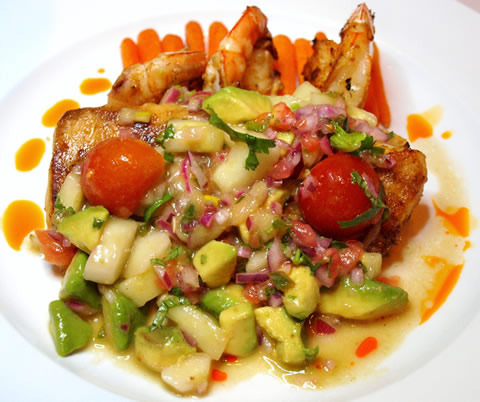 Our annual survey of seafood in Southeast Louisiana this year counts down the 33 best seafood species enjoyed in restaurants. The idea is that restaurants use different kinds of fish and shellfish than home cooks are likely to have at hand.
Our annual survey of seafood in Southeast Louisiana this year counts down the 33 best seafood species enjoyed in restaurants. The idea is that restaurants use different kinds of fish and shellfish than home cooks are likely to have at hand.

#15: Sheepshead
The most underrated of all the fish we eat around New Orleans has an image problem. It's that name. Sheepshead?
I once overheard a couple of out-of-towners reading the menu at Mr. B's. “Listen to this, Esther," the guy said. "Hickory-grilled fresh sheepshead, served with crabmeat and a lemon beurre blanc."
"My goodness!" said Esther. "They really do eat everything down here!”
The state fish authorities tried to help, creating an alternate name: rondeau sea bream. But it’s been slow catching on. But meanwhile, some unscrupulous fish dealers and chefs say they're selling redfish or trout while really using sheepshead, because it's cheaper. Because it's cheaper, they're less careful handling it than they would be for the supposed better species. The joke is on them: the flavor and texture of sheepshead is at least as good as what it’s being swapped for.
Cooking and eating sheepshead is nothing new. You see it on menus from at least a century ago, and ever since--with a gap in the 1970s and 1980s. Why not?It's white, firm, flavorful without being oily. The larger ones are very good on the grill or in the black iron skillet. Smaller ones can be pan-seared or broiled to great effect. Sheepshead meuniere, amandine, or with pecans is wonderful. You can get as fancy as you want with it. (The photo is of sheepshead with avocado and tomato from the now-extinct Galvez Restaurant.) If sheepshead is the fish of the day, I always order it.
The reason we don't see it more often goes back to the name again. It's quite descriptive. Sheepshead have big heads, with teeth reminiscent of those of the eponymous wooly mammal. And they're hard to process, giving less fillet per pound of whole fish than most other fish. But for those of us who don't have to catch or clean them, it's a great eating fish.
 Our annual survey of seafood in Southeast Louisiana this year counts down the 33 best seafood species enjoyed in restaurants. The idea is that restaurants use different kinds of fish and shellfish than home cooks are likely to have at hand.
Our annual survey of seafood in Southeast Louisiana this year counts down the 33 best seafood species enjoyed in restaurants. The idea is that restaurants use different kinds of fish and shellfish than home cooks are likely to have at hand.
